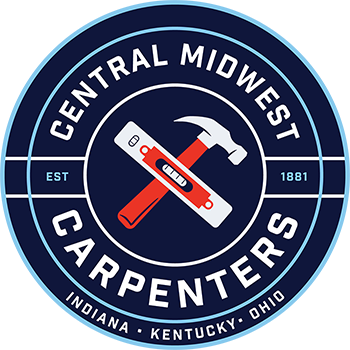Weakening Prevailing Wage Hurts Local Contractors
A case study from Southern Indiana demonstrates how weakening prevailing wage negatively impacts local contractors and local workers.
Out-of-state contractors benefited after Indiana weakened its prevailing wage law, according to a new Economic Commentary from the Midwest Economic Policy Institute.
Despite an emerging academic consensus that shows state prevailing wage laws have no discernible impact on project costs, lawmakers in Indiana weakened the state’s law – called Common Construction Wage – between 2012 and 2015. In 2013, the threshold for coverage was increased from $250,000 to $350,000, meaning that workers were no longer paid a prevailing wage rate on projects costing between $250,000 and $349,999.
Prior to raising its contract threshold to $350,000, hourly earnings for construction workers in Indiana were similar to all neighboring states except Kentucky. Economic research suggests that out-of-state contractors with lower-paid workers will flood the public construction market after a prevailing wage law is weakened. If true, the greatest threat to Indiana contractors would come from across its southern border in Kentucky, where construction workers earned $5 less per hour on average in July 2012.

Indiana’s southern border with Kentucky is thus a good case study on the local impact of weakening prevailing wages. There are 13 southern Indiana counties that border 14 northern Kentucky counties.
After weakening prevailing wage, employment in the heavy and civil engineering sector declined in Indiana’s southern-most counties but grew across the river in Kentucky border counties. After the Common Construction Wage threshold was raised, southern Indiana’s public works construction sector had an employment loss of 885 workers (21.2 percent). Meanwhile, public works construction employment increased by 770 workers (20.7 percent) in the Kentucky border counties.

The average monthly earnings of employees in heavy and civil engineering construction careers also declined after prevailing wage was weakened in the Indiana counties but increased across the river in the Kentucky counties. After adjusting for inflation, the county-level earnings of public works construction employees declined by $439 per month for the average Hoosier worker. At the same time, average earnings increased by $610 per month for comparable workers across the border in the Kentucky counties.

In this integrated regional economy along the Ohio River, the evidence suggests that out-of-state contractors from Kentucky with lower-paid construction workers were the real beneficiaries of Indiana weakening its prevailing wage law.
After Indiana weakened its prevailing wage law, higher-paid public works construction workers in the state’s 13 southern-most counties were replaced by lower-paid workers across the border in 14 Kentucky counties. The redistribution of jobs and earnings to Kentucky construction workers has an adverse impact on income tax revenues and sales tax revenues in Indiana.
This case study should be a cautionary note to lawmakers in states across the Midwest who are considering weakening their state’s prevailing wage.Prevailing wage is a policy that promotes high-road economic and community development. Weakening prevailing wage only hurts local contractors and workers.


Dejar un comentario
¿Quieres unirte a la conversación?Siéntete libre de contribuir!